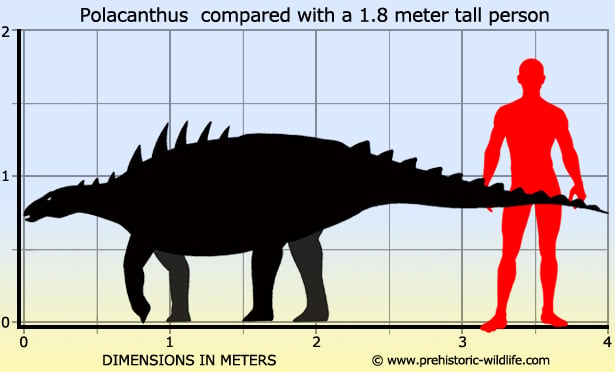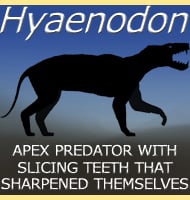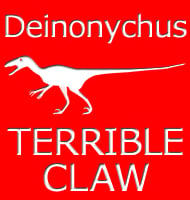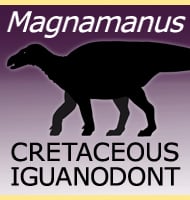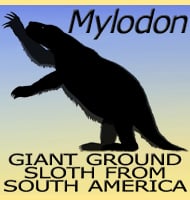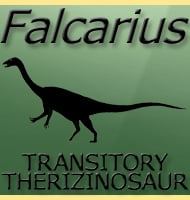In Depth
Discovered by Reverend William D. Fox in 1865, Polacanthus has been frustratingly ill preserved with only the hind quarters and parts of armour well preserved. The skull is also unknown, and for this reason modern reconstructions are based upon comparisons with other similar dinosaurs like Gastonia.
What can be ascertained is that Polacanthus was a quadrupedal low browser with heavy armour adaptations along its back. These include spikes over much of its body and a huge ‘shield’ that covered its hips and sacrum. This shield was built up from a mass of osteoderms and was not connected to any bone structure underneath. It could be that the armour was primarily for defence against theropods like Neovenator and Eotyrannus, which would have only been able to bite down from above.
The spikes would’ve made it difficult to get close without a carnivore impaling its snout, and the sacral armour prevented a bite to the sacrum that could have paralysed Polacanthus. If the tail was also a defensive weapon, the sacral armour would have helped to prevent a predator from disabling its defence.
Further Reading
– On a new Wealden saurian named Polacanthus – W. Fox – 1865. – Polacanthus foxii, a large undescribed dinosaur from the Wealden Formation in the Isle of Wight – J. W. Hulke – 1881. – The armoured dinosaur Polacanthus foxi, from the Lower Cretaceous of the Isle of Wight – W. T. Blows – 1987. – A new species of Polacanthus (Ornithischia; Ankylosauria) from the Lower Cretaceous of Sussex, England – W. T. Blows – 1996. – Espinas dermicas del dinosaurio anquilosaurio Polacanthus en las facies Weald de Salas de Los Infantes (Burgos, Espa�a). – Estudios Geol�gicos 55: 267-272. – X. Pereda-Suberbiola, M. Meijide, F. Torcida, J. Welle. C. Fuentes, L. A. Izquierdo, D. Montero, G. P�rez & V. Uri�n – 1999. – New remains of the ankylosaurian dinosaur Polacanthus from the Lower Cretaceous of Soria, Spain. – Cretaceous Research 28: 583–596. – X. Pereda-Suberbiola, C. Fuentes, M. Meijide, F. Meijide-Fuentes & M.J. Meijide-Fuentes – 2007. – Wealden armoured dinosaurs, by P. M. Barrett & S. C. R. Maidment. In English Wealden fossils. Palaeontological Association, London, Field Guides to Fossils 14, 769 pp, D. J. Batten (ed). – 2011. – Elementos de la armadura dermica del dinosaurio anquillosaurio Polacanthus Owen, 1865, en al Cret�cico inferior de Morella (Castell�n, Espa�a). – Ameghiniana 48(4): 508-519. – J. M. Gasulla, F. Oretga, X. Pereda-Suberbiola, F. Escaso & J. L. Sanz – 2011. – First Valanginian Polacanthus foxii (Dinosauria, Ankylosauria) from England, from the Lower Cretaceous of Bexhill, Sussex. – Proceedings of the Geologists’ Association 125: 233–251. – William T. Blows & Kerri Honeysett – 2014. – Osteology and Taxonomy of British Wealden Supergroup (Berriasian–Aptian) Ankylosaurs (Ornithischia, Ankylosauria) – Journal of Vertebrate Paleontology, DOI: 10.1080/02724634.2020.1826956. – Thomas J. Raven, Paul M. Barrett, Stuart B. Pond & Susannah C. R. Maidment – 2020.
